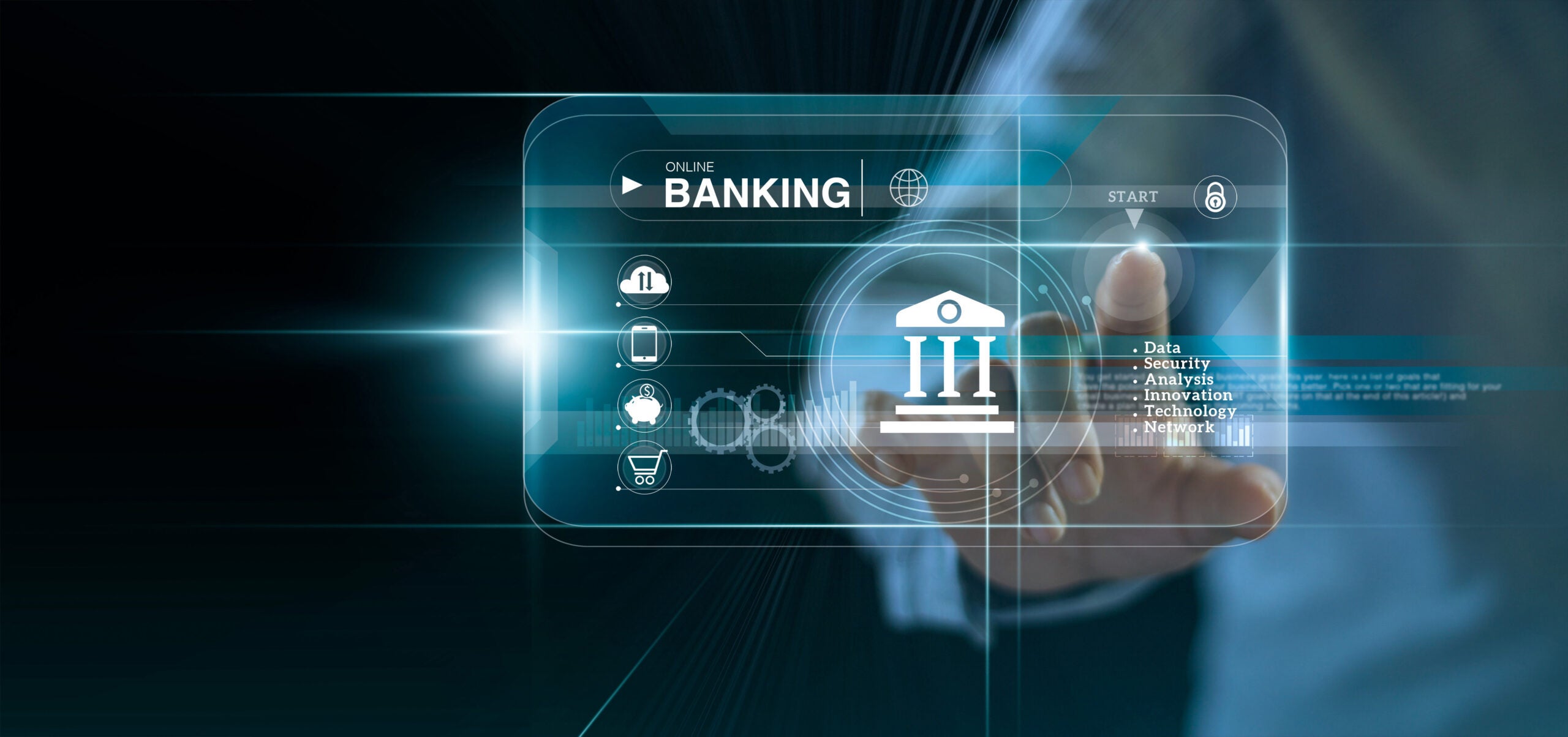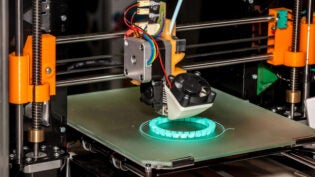
Banking and financial industries use modern technological solutions to improve their services and optimize work processes. One such solution is the Internet of Things (IoT), which is used in various aspects of financial institutions’ activities and offers many advantages. In this article, you will learn about the applications and benefits of IoT in banking and fintech.
What is IoT in Fintech?
The Internet of Things is the newest technology connecting many smart devices, such as cameras, sensors, smartphones, and wearable devices. It allows them to exchange data and react to events in real time. Banking and financial institutions rapidly integrate IoT into their processes. According to forecasts, by 2030, the market size of IoT in banking and finance will reach 30.9 billion USD.
IoT radically changes banking processes and brings many advantages. It helps banks streamline their work processes, improve customer interaction, reduce costs, and enhance the security of banking transactions.
Implementation of IoT for finance requires significant investments. To benefit from the massive amount of data collected by IoT devices, banks need to address several critical challenges:
- Reliable storage and processing of massive volumes of data;
- Ensuring data security;
- Implementation of powerful AI and ML algorithms for data analysis.
However, with proper planning and effective implementation of IoT, banking and financial institutions receive significant benefits and pay off their investments.
Applications of IoT in Banking and Fintech
It is hard to imagine the modern financial world without IoT devices that integrate into various processes, benefiting businesses. Let’s consider the most common applications of IoT in banking and financial processes.
Contactless payments
Implementing IoT into financial systems fundamentally changes how consumers make purchases. Contactless payments using smartphones or wearable devices such as smartwatches or fitness trackers are common. Such payments are convenient and fast and allow buyers to reduce their dependence on cards and cash.
The technology of contactless payments is rapidly developing and growing. Therefore, new innovative payment methods are emerging. For example, in cooperation with Samsung, Mastercard has integrated the ability to pay in smart refrigerators. Now, users can order and pay directly from the refrigerator’s touchscreen.
Integrating payment systems in smart cars allows customers to pay for parking, refueling, and products directly from the auto. Mercedes-Benz, for example, allows customers to pay for products and services from the car using the built-in MBUX multimedia system.
Fraud detection
Although ensuring the security of data and transactions is critical for financial systems, fraud in financial transactions remains high worldwide. According to the research, approximately 36% of financial institutions encountered card fraud in 2022.
The Internet of Things offers modern technologies to improve security and detect fraud. Utilizing IoT in financial transactions makes them more secure and reduces fraud.
Here are some examples of how IoT helps detect and prevent fraud:
- Using user biometrics such as fingerprints and facial recognition to complete a purchase and make a payment.
- Sending an authentication code to the phone to confirm the user is making the purchase.
- Using mobile applications to confirm the transaction.
- IoT technology and AI algorithms enable the analysis of transaction data in real time. They can detect unusual activity, block suspicious transactions, and notify users.
Real-time data analytics
Fintech uses IoT to collect and analyze real-time data, such as bank transaction data, user behavior, preferences information, etc. Data sources can be ATMs, self-service terminals, online banking applications, IoT devices, and sensors in bank branches.
Combining IoT and real-time data analytics enables financial institutions to extract valuable information from collected data and use it to effectively plan their work and make informed and fast data-driven decisions.
Let’s list several options for using real-time data analytics to optimize the operations of financial companies.
- Analyzing the user’s interests and behavior enables identifying and satisfying his needs, providing personalized recommendations, and implementing innovative financial products and services.
- Analysis of projects banks intend to invest in enables more accurate risks and investment profitability assessment.
- Identifying trends and forecasting changes in the market contributes to determining effective strategies for developing financial companies.
Arduino MQTT integration ensures seamless communication and efficient data exchange between resource-constrained IoT devices, enhancing the capabilities of banking and fintech applications.
Process automation
Thanks to IoT devices and real-time data exchange, various banking operations have become possible to automate. For example, IoT-based systems successfully perform some procedures without human intervention, such as opening and blocking bank accounts, processing requests, and reporting.
Automation allows financial companies to speed up the process of customer service, significantly increase the efficiency of processes, reduce the need for human intervention, reduce the number of human errors, and save on labor costs.
Management and maintenance of ATMs
Built-in IoT sensors in ATMs allow:
- Track the time and intensity of ATMs’ usage, which allows banks to identify the need to increase or decrease them in a specific location based on demand.
- Monitor cash levels in real time, allowing banks to optimize ATM replenishment schedules.
- Collect data on ATMs’ technical state, which enables timely detection of violations in their operation and maintenance. This reduces the likelihood of breakdowns and shortens downtime.
The American bank Citibank uses special built-in beacons in its ATMs, enabling its customers to use ATMs without cards. Customers can withdraw money and manage their accounts using their smartphones.
Smart branches
IoT in bank branches performs various functions:
- Smart alarm systems and video surveillance cameras enable remote monitoring of branches’ security. In case of suspicious activity, the IoT system sends instant notifications.
- Light, humidity, and air quality sensors automatically adjust lighting, heating, ventilation, and air conditioning systems, saving energy costs.
- IoT sensors inform customers about the nearest branches and ATMs, services provided, queue availability, and waiting times.
Advantages of using IoT for Banking and Fintech
IoT streamlines various financial processes, benefiting companies and their customers. Let’s consider the advantages of using IoT in finance in more detail.
Enhanced customer experience
IoT allows banks to collect valuable data about users’ behavior, interests, and purchasing habits. By analyzing this data, banks can provide customers personalized offers, increasing their satisfaction. In addition, banks use IoT data to analyze customers’ needs and introduce new customer-oriented functions and services.
IoT is widely used to analyze users’ consumer reports and provide advice on money management. It also enables innovative, more convenient payment methods for customers.
Enhanced security
IoT devices provide an additional level of security to banking transactions, thus protecting customer funds from misuse.
IoT-based smart locks, video surveillance cameras, and alarm systems protect bank branches from break-ins and automatically notify the security of intrusions, thus protecting the bank’s assets.
Improved employee productivity
Automating routine, repetitive processes allows financial and banking workers to concentrate on other, more critical tasks. It also reduces the number of errors, reduces the need for human resources, and saves costs.
Improved decision-making processes
Real-time IoT data analytics allows for more accurate risk assessment and better planning of development strategies and smart investments, resulting in increased revenues for financial institutions.
Summary
Information technologies are rapidly developing and being implemented in all business areas, including banking and financial operations. IoT provides an opportunity to introduce innovative products and services in the financial industry, such as contactless payments, ATMs that allow users to withdraw cash and manage data without a card, smart devices with payment options, etc.
The adoption of IoT in banking and fintech benefits financial institutions in many ways, including increased transaction and data security, enhanced operational efficiency, and improved user experience and satisfaction.
Author: Laurenz Dallinger is an accomplished technology enthusiast interested in digital transformation, with a particular focus on IoT. A valued member of the Cedalo team, the company behind the top MQTT broker, Laurenz is passionate about sharing his knowledge and ideas with developers seeking new and efficient ways of communicating with devices.
773 Views











